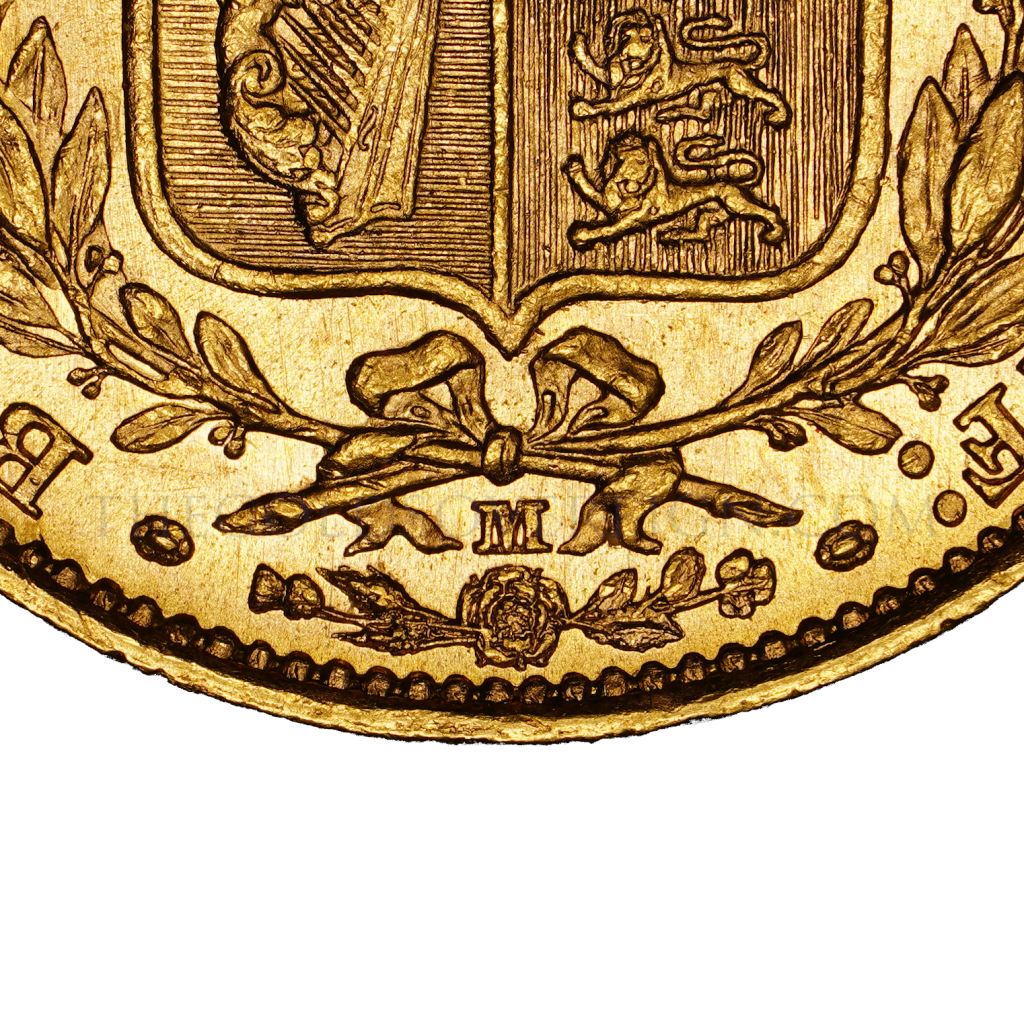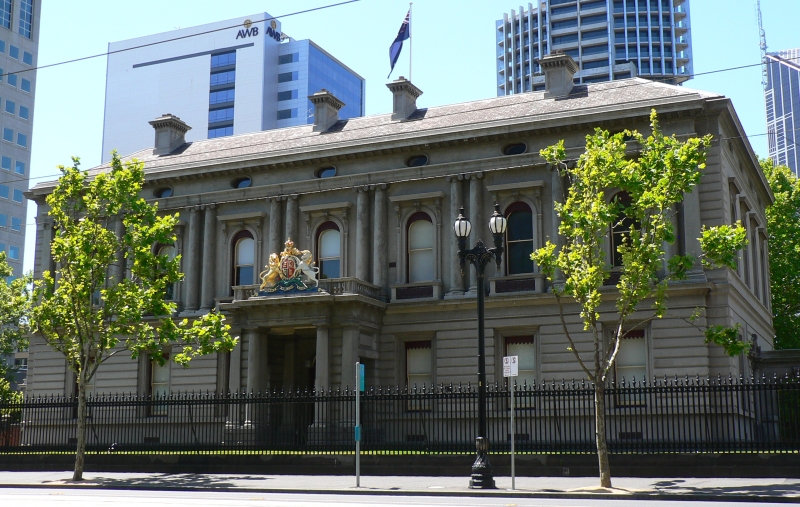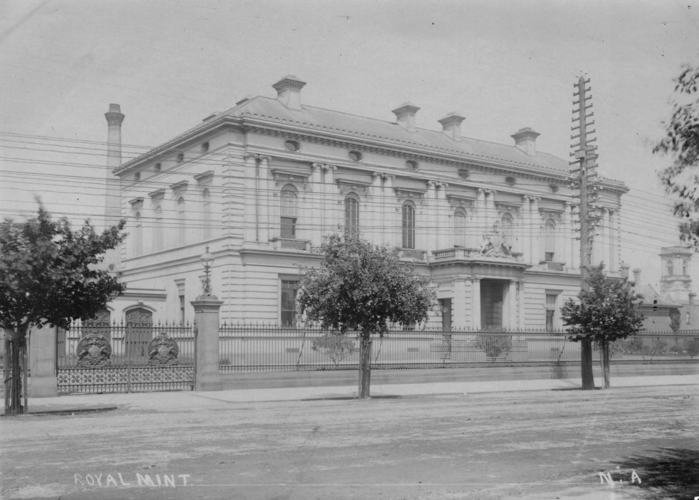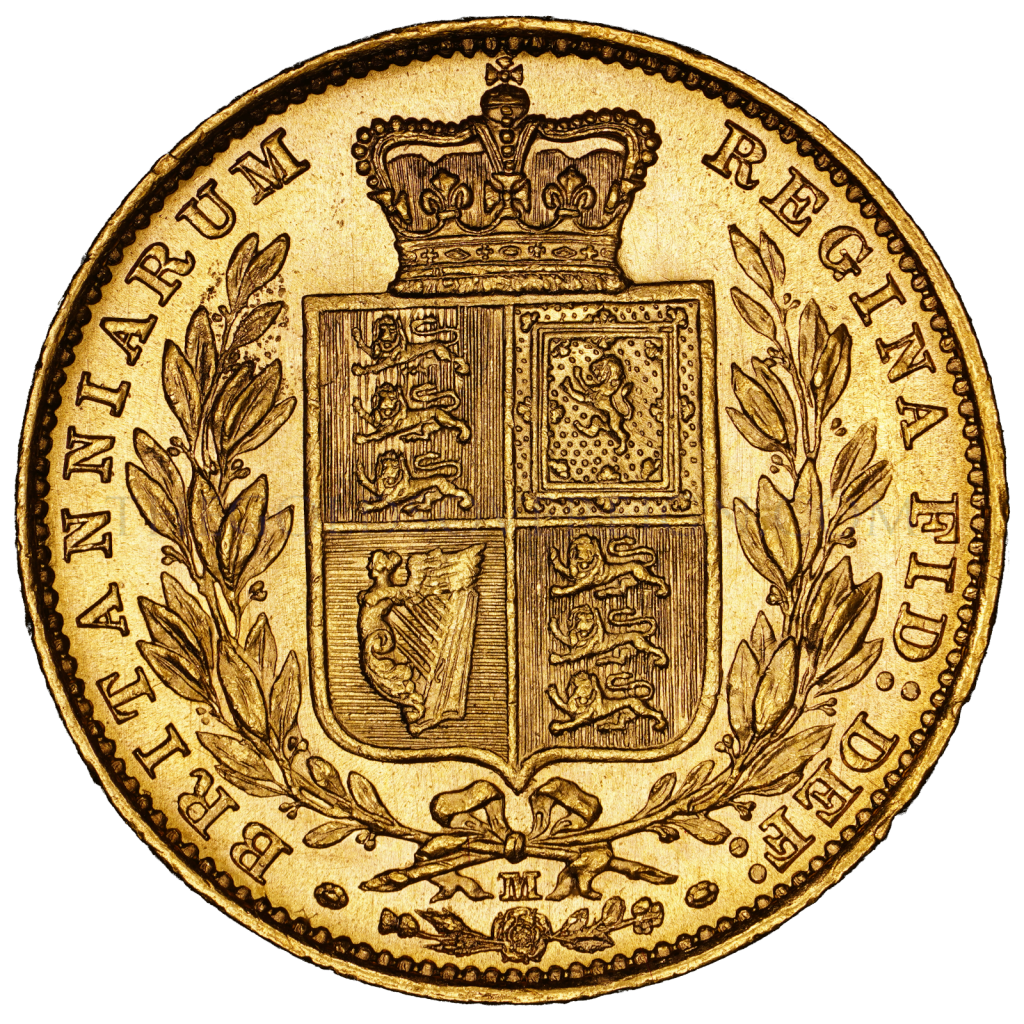
As one of Britain’s largest and most prized colonial possessions, Australia was home to several other Royal Mint branches as well the main Sydney branch that produced sovereigns.
The building that would become the Melbourne Branch of the Royal Mint is located at William and LaTrobe Streets (280-318 William Street and 387-429 La Trobe Street). The building is considered a historical and cultural heritage, representing one of the best examples of the architect J.J. Clark’s work. Particularly, this was due to the Renaissance revival style used, being a copy of Ralphae’s 1515 Palazzo Vidoni-Caffarelli.
The building also carries a beautiful wood carved coat of arms, specifically a modified version of then-monarch, Queen Victoria. The Melbourne branch still exists as a private limited company under the direction of various Australian precious metals companies, such as the Australian Bullion company.

History (1850 – 1859)
During the late nineteenth century, Australia continued to grow both in terms of population and financial output. As one would expect, this was chiefly due to the discovery of gold in the province of Victoria. By 1850, the cities population had nearly doubled from twenty-five thousand to near forty-thousand and the port became one of the busiest in the region. By 1865, Melbourne had overtaken Sydney as Australia’s largest city.
Due to the ever-growing financial and social importance of Melbourne, the Victorian legislature petitioned the Imperial parliament in 1859 and 1864 to allow the establishment of a sovereign mint.
History (1859 – 1965)
This would culminate in the Victorian parliament passing an act in 1867 that set aside the funds needed to build a project. Subsequently, in 1869, then-monarch Queen Victoria issued a Royal Proclamation. This allowed for the establishment of a Royal Mint whilst also allowing its produced sovereigns to be considered legal tender in all British dominions.
The branch would finally open on the 12th June 1872, seventeen years after the construction of the Sydney branch.
The produced sovereigns were revered across Britain’s colonial empire, particularly in India. Consequently, a Chinese General known as Wong Yung Ho visited the Melbourne mint in 1887. The Qing General claimed that the Mint’s Shield sovereign was more attractive in the Asian market. This was due to St. George slaying the dragon design being an affront to traditional Chinese folklore and culture. Perhaps as vindication for the General’s point, records show that Indian traders did prefer the usage of the shield design when trading in the Chinese market.

As well as producing half-sovereigns and sovereigns, the Mint would produce fine medals, particularly for agricultural societies and exhibitions. The Mint also featured well-developed infrastructure for purifying and assaying gold that it would strike into sovereigns. The establishment was the first Australian Mint to produce silver and bronze coins for the new commonwealth in 1919.
However, sadly in 1970, the mint ceased to be a branch of the Royal Mint. This was due to production inefficiency, which was exacerbated by the construction of a new mint in Canberra in 1965.

